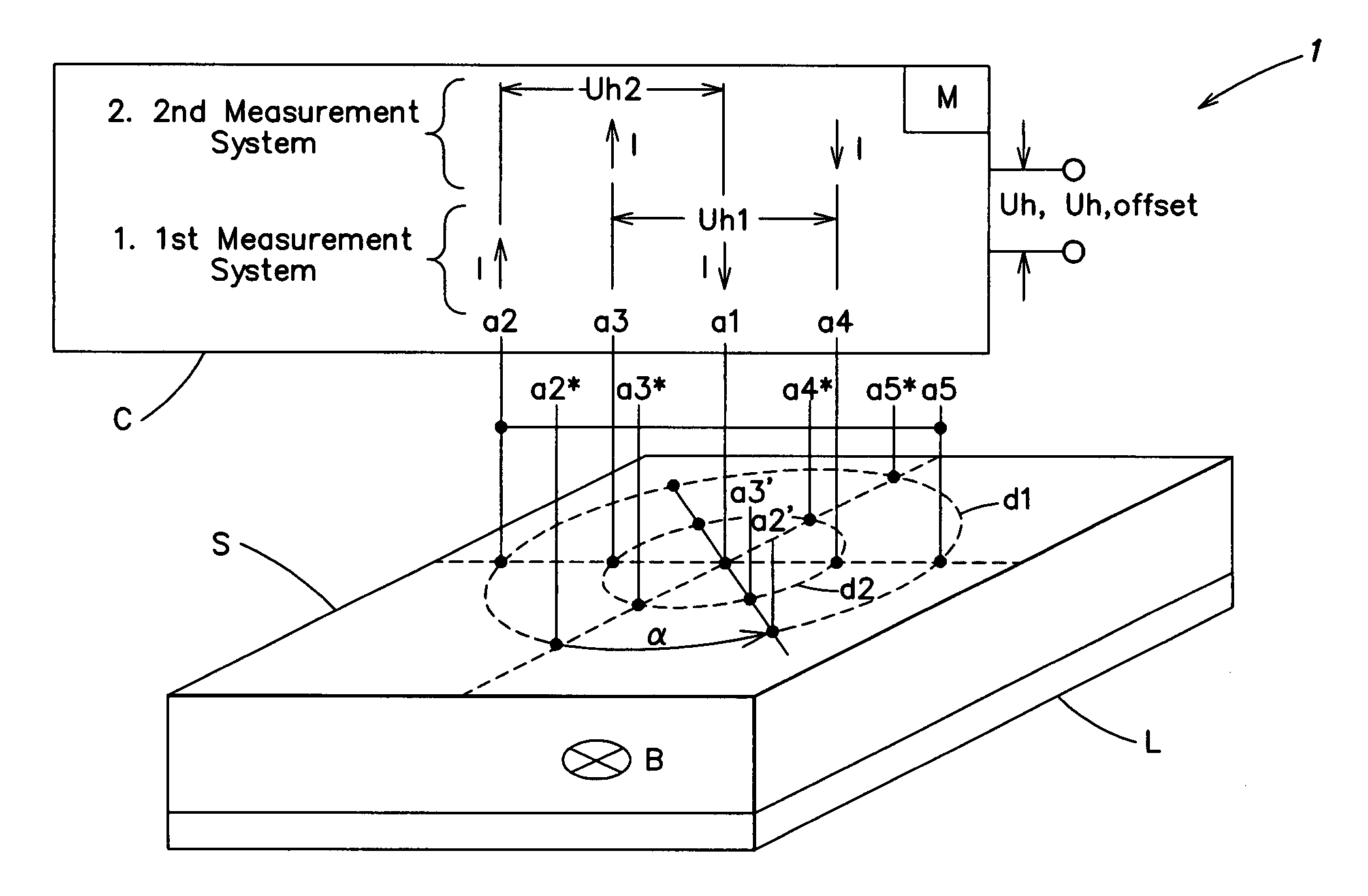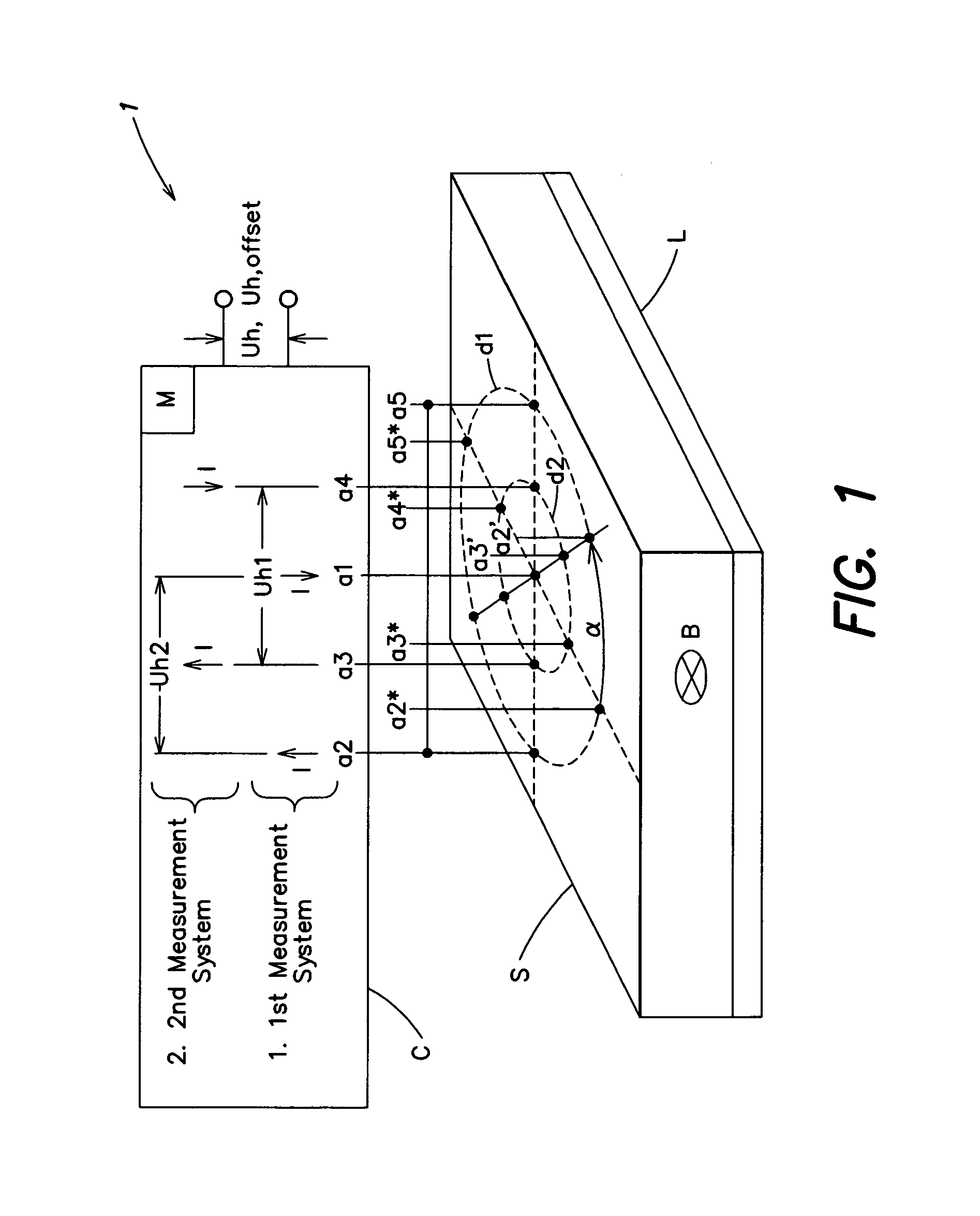Offset-reduced hall sensor
a hall sensor and offset reduction technology, applied in the field of magnetic field sensors, can solve the problems of inability to adjust the offset drift of the hall sensor, and the properties of the currently known vertical sensor are often very inaccura
- Summary
- Abstract
- Description
- Claims
- Application Information
AI Technical Summary
Benefits of technology
Problems solved by technology
Method used
Image
Examples
Embodiment Construction
[0020]FIG. 1 illustrates an embodiment of a vertical Hall sensor. This sensor is preferably an integral component of an integrated circuit which, in addition to an actual Hall sensor element S, also has an electronic analyzer in the form of a control circuit C. The actual Hall sensor element is composed of a planar sensor wafer through which flows a magnetic field B. A plurality of taps a1–a5, a2*–a5*, a2′, a3′ are located on one of the planar surfaces of Hall sensor element S. When a corresponding voltage is applied through these taps, an in-feed or out-feed of a Hall sensor current I occurs, as does the tapping of a Hall voltage Uh1, Uh2. In the embodiment shown, a base material or terminating material, such as a conducting layer L, is applied to the surface of Hall sensor element S opposite taps a1, a2, . . . .
[0021]In a first measurement system, the control circuit C serves to feed Hall sensor current I to the first central tap a1, and feed the current out through the two taps a...
PUM
 Login to View More
Login to View More Abstract
Description
Claims
Application Information
 Login to View More
Login to View More - R&D
- Intellectual Property
- Life Sciences
- Materials
- Tech Scout
- Unparalleled Data Quality
- Higher Quality Content
- 60% Fewer Hallucinations
Browse by: Latest US Patents, China's latest patents, Technical Efficacy Thesaurus, Application Domain, Technology Topic, Popular Technical Reports.
© 2025 PatSnap. All rights reserved.Legal|Privacy policy|Modern Slavery Act Transparency Statement|Sitemap|About US| Contact US: help@patsnap.com



